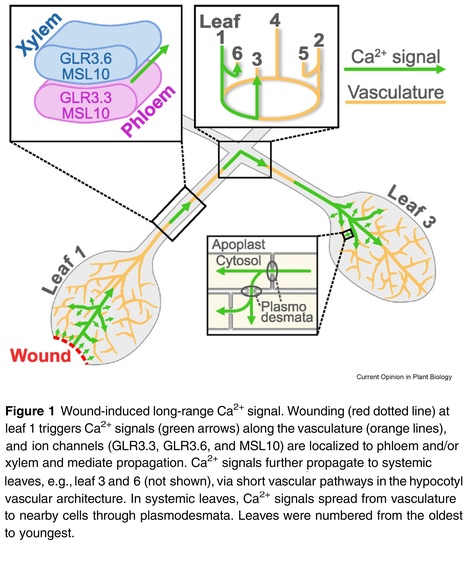Authors: Hiraku Suda and Masatsugu Toyota.
Current Opinion in Plant Biology (2022)
Highlights • Plants show various long-range signals in response to wounding. • Ca2+, electrical, ROS, and glutamate waves play key roles in systemic signaling. • Xylem flow, pressure changes, depolarization and ROS underlie the signal transduction. • The systemic signal transduction system involves GLRs, MSL10, and AHA1.
Abstract: "Plants show long-range cytosolic Ca2+ signal transduction in response to wounding. Recent advances in in vivo imaging techniques have helped visualize spatiotemporal dynamics of the systemic Ca2+ signals and provided new insights into underlying molecular mechanisms, in which ion channels of the GLUTAMATE RECEPTOR-LIKE (GLR) family are critical for the sensory system. These, along with MECHANOSENSITIVE CHANNEL OF SMALL CONDUCTANCE-LIKE 10 (MSL10) and Arabidopsis H+-ATPase (AHA1) regulate the propagation system. In addition, membrane potential, reactive oxygen species (ROS), and glutamate waves operate in parallel to long-range signal transduction. We summarize these findings and introduce a model that integrates long-range Ca2+, electrical, ROS, and glutamate signals in systemic wound responses."
 Your new post is loading...
Your new post is loading...
 Your new post is loading...
Your new post is loading...













